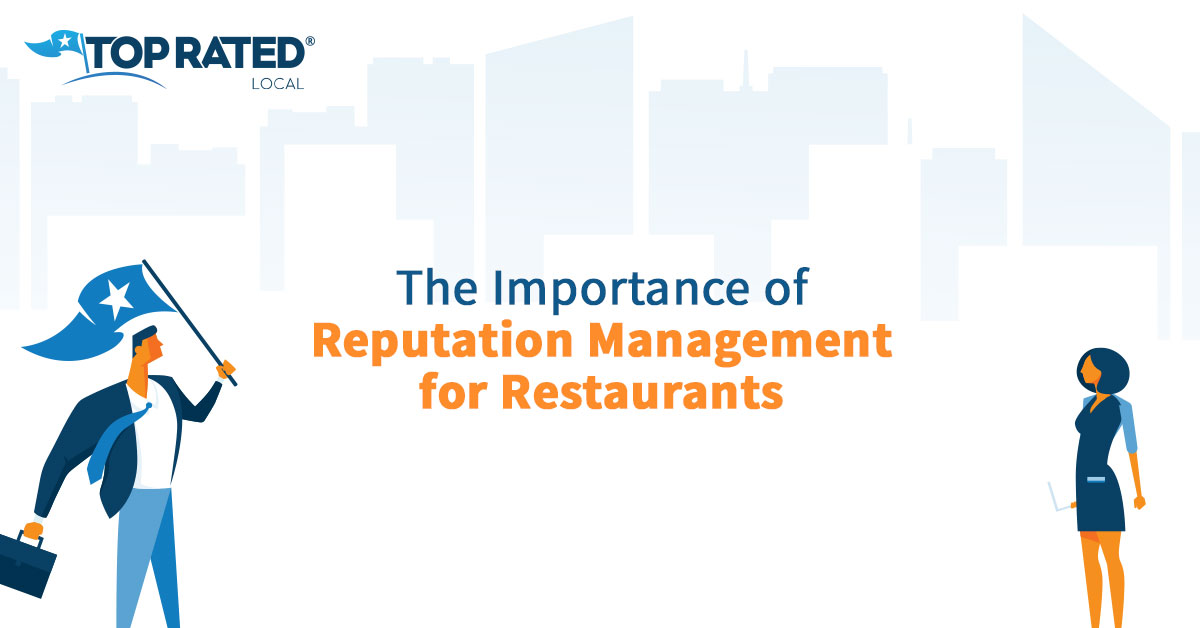Does your local business really need a website?
It used to be that the only way for your business to be online was to have a website, but all of that has changed. These days, there are lots of ways to have an online presence, from social media to review sites and directories. However, regardless of whether or not you’re on Facebook or Google My Business, you need a website. It’s simply non-negotiable when it comes to the future success of your business.
Here at Top Rated Local®, we have an awards program that recognizes the businesses with the best reputations in each state across a variety of industries. While auditing our award winners, I’ve been struck more than once by just how many contenders still don’t have websites, and they’re not alone.
Did you know that fewer than two-thirds of all small businesses have a website? The reasons for this may vary, with some businesses believing that they’re too small to need a website, some business owners citing the cost of building a website and some believing that a website is irrelevant for their industry, among other things. But, the fact of the matter is that, no matter what size your business is, what industry you’re in, how many clients you have or how many word-of-mouth referrals your clients give you, having a website isn’t optional for your local business or, for that matter, your business’s online reputation.
5 reasons why a website is a must for your local business
#1. To build an online presence
The first and most essential reason to build a website for your business is that it’s the first step toward establishing its online presence. Don’t get me wrong, if you have a Facebook page and a Google My Business listing, you’ve got an online presence, but without a website, it’s missing its main hub.
Think of your business’s presence on review sites, social media and directories as the introduction to your business online. Often, these are the places where people can find your business online, but they’re not their final destination. In most cases, when someone finds you on one of these sites, and they’re interested in the possibility of working with you, they’ll go to your website to learn more about who you are, what you do and if you have what it takes to meet their needs.
 #2. To establish credibility online
#2. To establish credibility online
When someone finds your business on a directory or a review site, the next logical step in determining whether or not they want to work with you usually consists of visiting your website. As a result, if you don’t have a website, it can turn visitors off, and many of them will move on to the next business on the list.
Although there are still a large number of small businesses that don’t have a website, consumers still expect that you have one, and if you don’t, it can lead to questions about the credibility of your business. In fact, a majority of people won’t trust a business without a website.
Think about it from a consumer’s perspective. First, they find your business on a directory — let’s say Google My Business. They then spend a few minutes reading your reviews, and you seem like a decent company to work with. Now, they’re at the stage where they want to learn more about your business, but there’s no website to visit. Without a website, they’re left wondering if you can meet their needs or if your business is even legitimate. Finally, they decide to move on to the next listing.
#3. To gain more control over your online presence
There’s a lot that goes on online that’s totally out of your control as a business owner. You can claim your business listings, write your own business description and respond to your customers’ reviews, but you have no control over what those reviews say. On social media, too, you can start the conversation, but you can’t control it. You have some measure of control over your online presence across the web, but your website is the one and only place where you’re totally in control.
On your website, you decide which testimonials to highlight, which images to use, how to describe your business, etc. It’s the one place where you get to fully decide what kind of impression you make on your visitors and what they come away with.
#4. To inform consumers about what you have to offer
Too many businesses make the mistake of believing that having a Facebook page or a Google My Business listing is the only thing they need to do online. And, while these sites are great for helping people find your business online, they don’t tell people a whole lot about your business or what you have to offer.
Let’s say someone is looking for a specific service, like the dry foam method of carpet cleaning. They know enough to know that they don’t want a typical carpet cleaner, but there’s no “dry foam” category of carpet cleaning on Yelp. So, when they find a carpet cleaner that looks like they have decent reviews, they go to their website to ensure that they offer what they need.
Directories and listing sites often allow businesses to write their own descriptions, but it’s not always easy or possible to give consumers the information they need to confidently choose their business in a few sentences. Your website is the perfect place to go into more detail about what you offer and how you can help.
#5. To get your name out there
Staying competitive online means making your business as visible as possible online. That means, regardless of whether someone is searching Google, Facebook or Top Rated Local for a local business, your business needs a presence.
Having a website is just one more avenue for people to find your business online, and what’s more is that there are a lot of things you can do on your website that you can’t on your Facebook page or Google My Business listing that will help it rank higher in the organic search results, and for lots more keywords.
Online reputation management is important for every business to think about, but your presence online will never be as strong as it could be unless you have a website. If you’re interested in building your own local business site, the Marketing 360® Websites app can help.
With an intuitive drag-and-drop editor and a library of beautiful design templates to choose from, Marketing 360 Websites makes it easy to build your own website, no matter how much design experience you have. Get started!
Originally published on 2/7/20




 Once you run a listings scan for your business, there’s a good chance that you’ll find that your business is listed on dozens of sites across the web.
Once you run a listings scan for your business, there’s a good chance that you’ll find that your business is listed on dozens of sites across the web. There’s a lot of business information that you’ll want to keep secure and protected, but any information that can be used to get ahold of you or visit your business, like your phone number, address and business hours, needs to be shouted from the mountaintops.
There’s a lot of business information that you’ll want to keep secure and protected, but any information that can be used to get ahold of you or visit your business, like your phone number, address and business hours, needs to be shouted from the mountaintops.
 Content
Content
 What makes negative reviews a good thing?
What makes negative reviews a good thing?

 It’s no secret that a lot of consumers rely on online reviews to guide them when they make decisions on which products to purchase or which company to hire.
It’s no secret that a lot of consumers rely on online reviews to guide them when they make decisions on which products to purchase or which company to hire. If you are the owner of a Mexican restaurant that specializes in street tacos, and someone googles, “street tacos near me,” you want your restaurant to be the first thing that pops up in the SERP (search engine results pages).
If you are the owner of a Mexican restaurant that specializes in street tacos, and someone googles, “street tacos near me,” you want your restaurant to be the first thing that pops up in the SERP (search engine results pages).
 Now that your business is listed and your listing is claimed on a variety of review sites, it’s time to start generating more reviews for your salon. The more reviews you have, the better, and it’s even better when your reviews are more recent.
Now that your business is listed and your listing is claimed on a variety of review sites, it’s time to start generating more reviews for your salon. The more reviews you have, the better, and it’s even better when your reviews are more recent. A big part of managing your nail salon’s online reputation actually happens in person in your salon. Not every review will be an honest reflection of a client’s experience in your nail salon, but most of them will be, which means that your nail salon’s online reputation is a reflection of the kind of service you offer in your salon. One of the best things you can do to manage it is to make customer service your main focus every day.
A big part of managing your nail salon’s online reputation actually happens in person in your salon. Not every review will be an honest reflection of a client’s experience in your nail salon, but most of them will be, which means that your nail salon’s online reputation is a reflection of the kind of service you offer in your salon. One of the best things you can do to manage it is to make customer service your main focus every day.



 The first and most important thing a local business can do from an SEO standpoint is to create their listing on Google My Business, and then to optimize it.
The first and most important thing a local business can do from an SEO standpoint is to create their listing on Google My Business, and then to optimize it. Setting your website up for SEO success is a little more involved than you might first think, but it will be worth it.
Setting your website up for SEO success is a little more involved than you might first think, but it will be worth it.

 Most business owners understand how important it is to generate reviews on a regular basis, but getting their clients to actually write reviews can be awkward and challenging.
Most business owners understand how important it is to generate reviews on a regular basis, but getting their clients to actually write reviews can be awkward and challenging. A lot of business owners get caught up in the “online” aspect of online reputation management and forget that a business’s online reputation is largely about the kind of face-to-face service they offer each and every day.
A lot of business owners get caught up in the “online” aspect of online reputation management and forget that a business’s online reputation is largely about the kind of face-to-face service they offer each and every day.